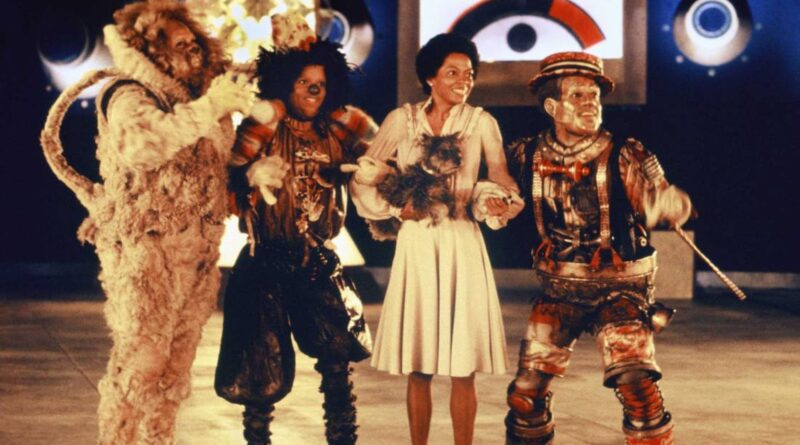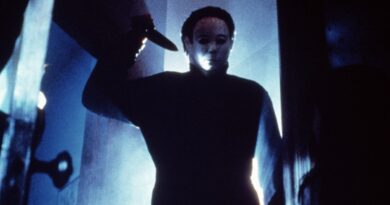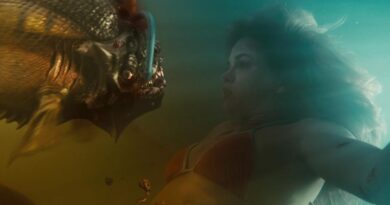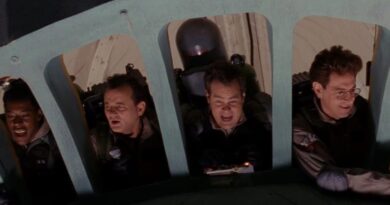The Wiz (1978)
Sidney Lumet’s The Wiz is an adaptation not just of the Tony-winning Broadway musical but also of L. Frank Baum’s novel The Wonderful Wizard of Oz. This means it already has three strikes against it from a sizable audience of fans and purists. Those who loved the novel – and, it cannot be denied, the 1939 musical it spawned – may not respond well to the story’s urbanized updates, the cast consisting entirely of African American actors, the songs peppered with Motown, funk, and gospel influences. Those who want an exact copy of the stage show may not appreciate the film’s deviations, most notably turning the land of Oz into a fantastical version of New York City. And followers of Sidney Lumet probably won’t mention this film in the same sentence as his more substantive efforts, including 12 Angry Men, Dog Day Afternoon, and Network.
While it’s true that Lumet’s vision doesn’t match those of Baum or Victor Fleming (the director of The Wizard of Oz), The Wiz is nevertheless harmless, innocent, and a good deal of fun. It’s also cheerfully optimistic, with songs such as “Believe in Yourself” and “Home” obviously written with the power of positive thinking in mind. Some may find this approach corny, perhaps even condescending. Others may feel rejuvenated and encouraged by its optimism. Others still won’t care one way or the other about the underlying message and focus instead on its infectious songs and visual creativity, the latter aided in no small part by special effects supervisor Albert Whitlock, cinematographer Oswald Morris, production and costume designer Tony Walton, and of course, the city of New York itself.
Dorothy Gale has been transformed from a Kansas farm girl to twenty-four-year-old Harlem kindergarten teacher (Diana Ross), who’s so shy and timid that, as her Aunt Em (Theresa Merritt) points out one snowy Thanksgiving night, she has never ventured any farther south than 125th Street. As Dorothy contemplates turning down an offer to teach high school, her dog Toto runs out of Em’s apartment and into the middle of the street. Dorothy rescues him just as a freak blizzard, complete with an impossible tornado, whisks them both away to the land of Oz. Dorothy’s journey from Munchkinland to the Emerald City is essentially the same as it has always been; she’s still watched over by Glinda the Good (Lena Horne), and she must once again have a final confrontation with the Wicked Witch of the West, here named Evilene (Mabel King), the ironfisted ruler of a sweatshop.
Dorothy gains the same three companions as she journeys down the yellow brick road. The Scarecrow (Michael Jackson) still yearns for a brain, but is now stuffed with clippings containing quotes from writers, philosophers, and spiritual leaders. The Tin Man (Nipsey Russell) still yearns for a heart, but is now a former sideshow carnie left to rust at an abandoned amusement park. And the Cowardly Lion (Ted Ross) still yearns for courage, but after being banished from his pride, he now hides within one of the lion statues outside the New York Public Library. When they reach the Emerald City, they will of course have an audience with The Wizard of Oz, this time referred to simply as The Wiz, asking for what they wish for the most before realizing that he’s a phony – a failed political prospect (Richard Pryor) who wound up in Oz on a hot-air balloon ride from Atlantic City.
One of the greatest pleasures of this film is looking at how the story we all know and love has been visually reimagined. Lumet’s fanciful vision of New York City evokes the same sense of creativity and playfulness evident in the film adaptation of Godspell, where the characters traveled from landmark to landmark as if the entire city was their private jungle gym. The site of the New York World’s Fair serves as Munchkinland, and the Munchkins themselves begin as graffiti paintings that magically come off the walls. The tracks of Coney Island’s Cyclone roller coaster is where the Tin Man is found, the World Trade Center is transformed into the Emerald City, and the poisonous poppy field is represented by a troupe of scantily-clad prostitutes. There’s even a charmingly B-movie sequence in a subway station where trash bins sprout fangs and tiled columns break free of the ceiling and floor and gang up on Dorothy. A glorious distant shot reveals the yellow brick road snaking its way across the Brooklyn Bridge into Manhattan.
The message of 1939’s The Wizard of Oz can be boiled down to the old phrase, “Home is where the heart is”; Dorothy felt something was missing from her life, but her adventures in Oz made her realize that she always had everything she needed right where she was. The Wiz takes a different approach; the message is that you can never find out who you are by securing yourself within the walls of home, that you must venture out into the world and face whatever fears you might have. In either case, a positive, life-affirming message has been sent. Given its capacity to change people for the better, it’s too bad the land of Oz isn’t real. If we all had the opportunity to dance down the yellow brick road with a scarecrow, a tin man, and a cowardly lion, if we all had to vanquish a wicked witch, we might not have a lot of the problems we have today.




